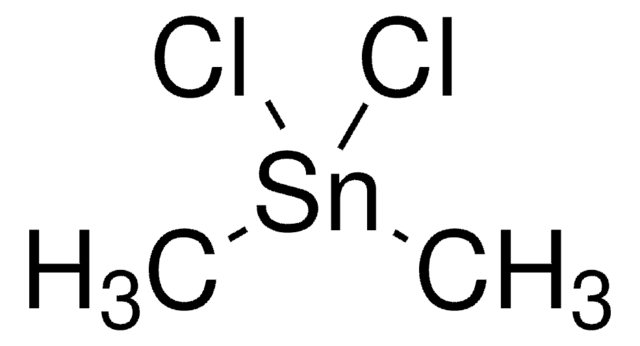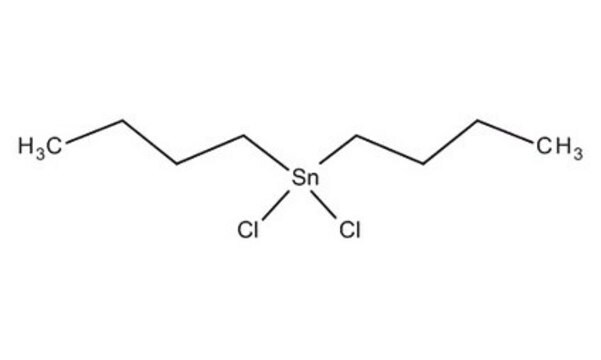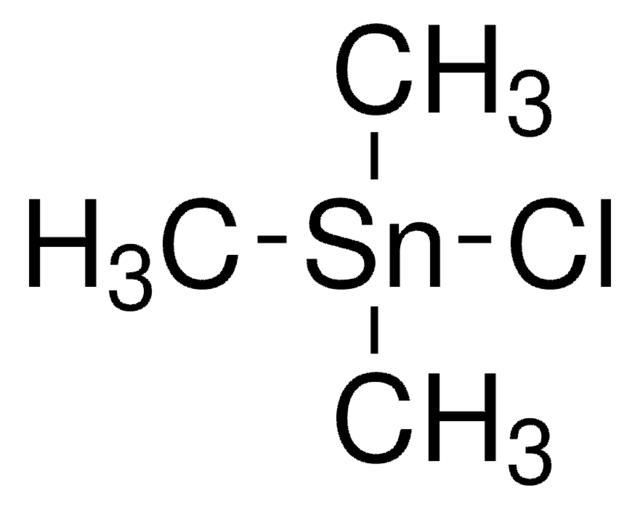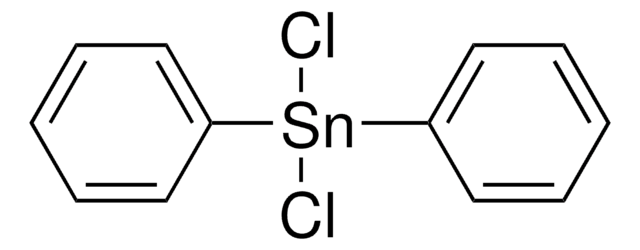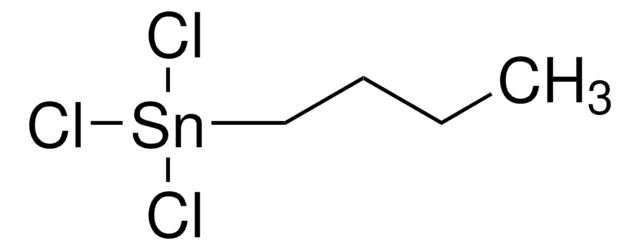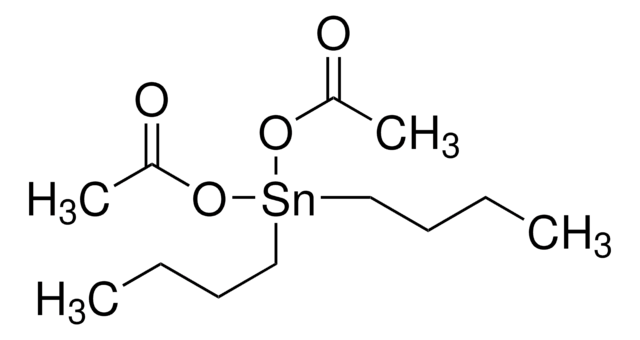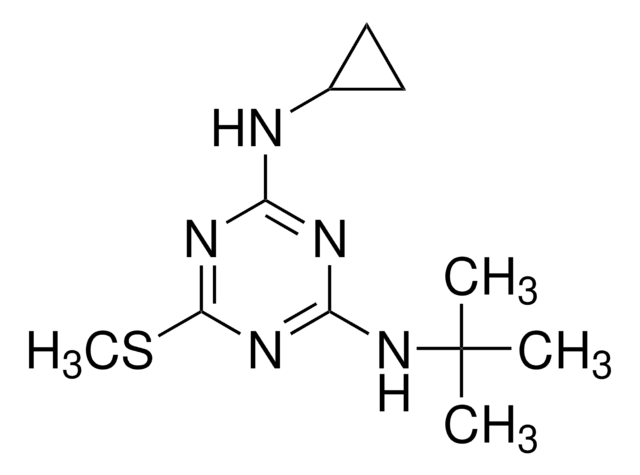205494
Dibutyltin dichloride
96%
Sinónimos:
Dibutyldichlorotin
About This Item
Productos recomendados
Nivel de calidad
Análisis
96%
formulario
solid
bp
135 °C/10 mmHg (lit.)
mp
37-40 °C (lit.)
cadena SMILES
CCCC[Sn](Cl)(Cl)CCCC
InChI
1S/2C4H9.2ClH.Sn/c2*1-3-4-2;;;/h2*1,3-4H2,2H3;2*1H;/q;;;;+2/p-2
Clave InChI
RJGHQTVXGKYATR-UHFFFAOYSA-L
¿Está buscando productos similares? Visita Guía de comparación de productos
Aplicación
- Effects of dibutyltin compounds on PPARγ/RXRα activity: Studies the impact of various dibutyltin compounds, including dibutyltin dichloride, on adipogenesis and inflammation in mammalian cells, emphasizing their effects on the PPARγ/RXRα pathway (Milton et al., 2017).
Palabra de señalización
Danger
Frases de peligro
Consejos de prudencia
Clasificaciones de peligro
Acute Tox. 2 Inhalation - Acute Tox. 3 Oral - Acute Tox. 4 Dermal - Aquatic Acute 1 - Aquatic Chronic 1 - Eye Dam. 1 - Muta. 2 - Repr. 1B - Skin Corr. 1B - Skin Sens. 1 - STOT RE 1 Oral - STOT SE 1 Oral
Órganos de actuación
thymus
Código de clase de almacenamiento
6.1A - Combustible acute toxic Cat. 1 and 2 / very toxic hazardous materials
Clase de riesgo para el agua (WGK)
WGK 3
Punto de inflamabilidad (°F)
235.4 °F - closed cup
Punto de inflamabilidad (°C)
113 °C - closed cup
Equipo de protección personal
Eyeshields, Faceshields, Gloves, type P3 (EN 143) respirator cartridges
Elija entre una de las versiones más recientes:
¿Ya tiene este producto?
Encuentre la documentación para los productos que ha comprado recientemente en la Biblioteca de documentos.
Los clientes también vieron
Nuestro equipo de científicos tiene experiencia en todas las áreas de investigación: Ciencias de la vida, Ciencia de los materiales, Síntesis química, Cromatografía, Analítica y muchas otras.
Póngase en contacto con el Servicio técnico
